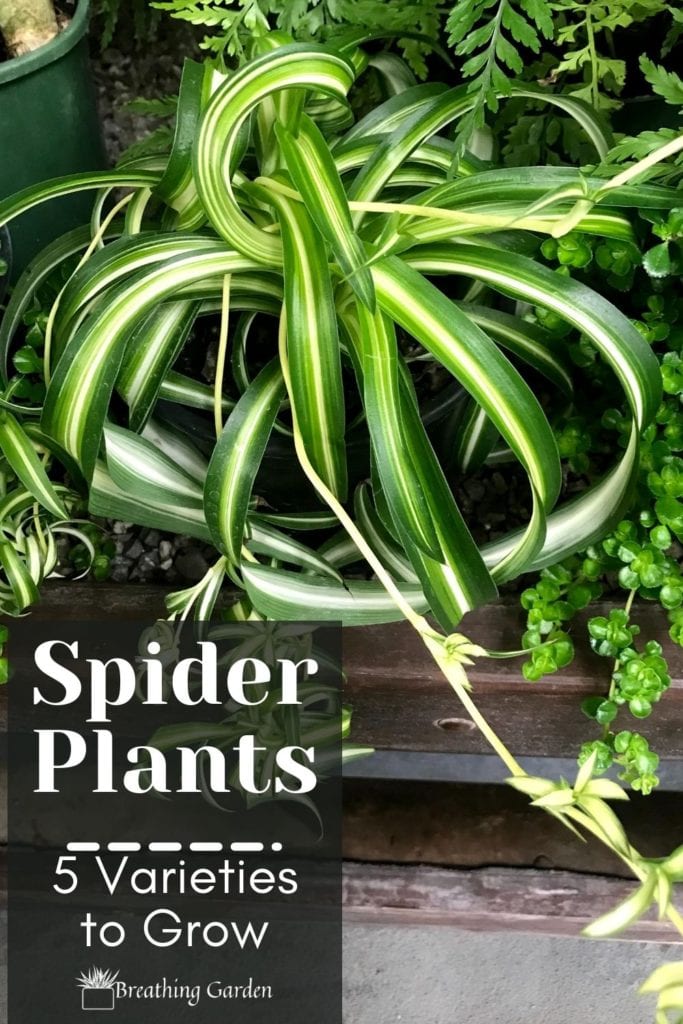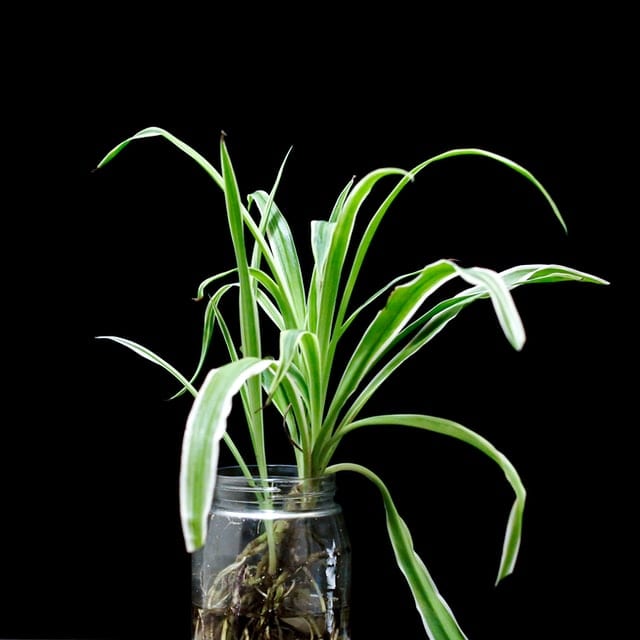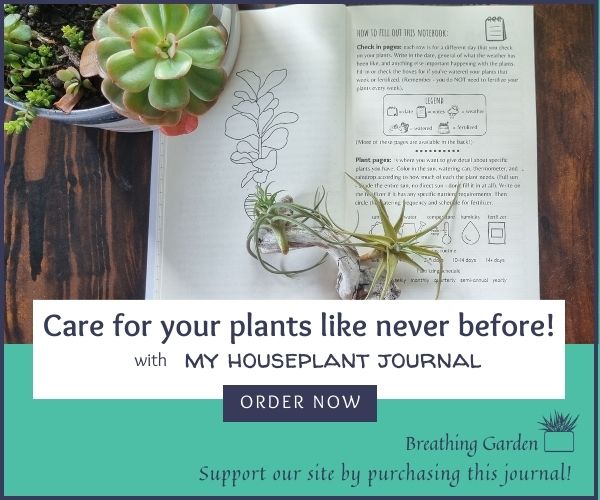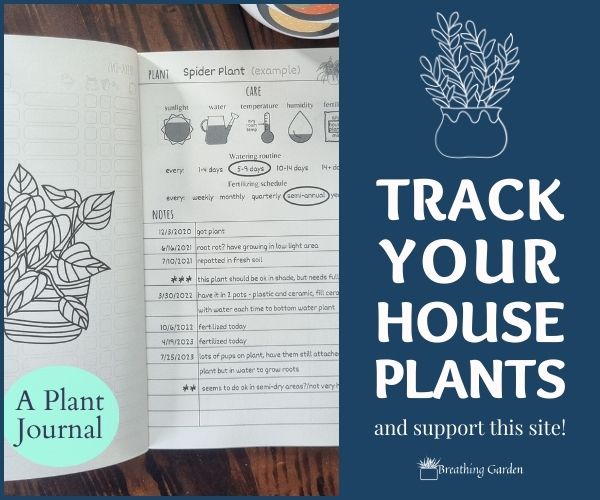Spider plants are a great plant to have in your home. They clean the air, and are such low maintenance. Spider plants are one of the easiest plants to keep alive, as they can handle just about anything. There are so many spider plant varieties to choose from!
*This post may include affiliate links. When you purchase items from these links, we will receive a small commission, at no extra cost to you, to help support this website. Thank you for your support! Read more ->
There are over 200 types or species of spider plant, which belong to the Chlorophytum genus. A few species have become popular as houseplants, with their beautiful habit, long, strap-like leaves and spiderlings that can be snipped off and grown in pots of their own. A well-cared-for plant can also produce wands of pretty white or yellow flowers in the summer.
Often you’ll find variegated spider plants, usually with various shades of white, yellow, or green on the long leaves. These are beautiful, and the way they are variegated determines which type of spider plant it is! Regardless of which you choose, any of these spider plant varieties will work well in hanging baskets.
Here are five types of spider plants for your home.
1. Chlorophytum comosum ‘Vittatum’ Spider Plant

This is the most popular of the spider plant varieties and is familiar to most people. The Vittatum is the one whose gently curving leaves have a creamy/light green center with darker green at the edges.
One of the reasons it’s so popular is that it tolerates drought and thrives in light shade. This means it’s great for an apartment that doesn’t get a lot of light and a busy plant parent who may forget to water now and then. This is the type of spider plant that is one of the best for cleaning the air.
This one produces small white flowers if it’s properly taken care of!
2. Chlorophytum viridescens ‘Hawaiian’ Spider Plant
This is the Hawaiian spider plant. The leaves of this plant are wider than those of Vittatum and are a deep, stripe-less green. However, the spiderlings are striped green and gold and borne on long, gold stems. These green leaves are sure to be beautiful in any room.
The plant is smaller and more compact than Vittatum. This plant does best in partial shade to full sunlight and in soil that’s moist but well-draining. It’s one of the few varieties that prefers a lot of light.
3. Chlorophytum Comosum ‘Bonnie’ Spider Plant
While other spider plants tend to have leaves that gently curve, the fast-growing Bonnie spider plant is known for green leaves that twist and curl attractively. The narrow leaves grow between 8 and 18 inches long, so this plant is also ideal for small spaces. It’s no wonder that its nickname is the “toilet plant.” This spider plant looks like curly hair!
This curly spider plant prefers partial to full shade, making this a great compact plant for rooms without a lot of sunlight.
4. Chlorophytum comosum ‘Bonnie Variegated’ Spider Plant
If you like a plant with a dramatic look, the Variegated Bonnie may be for you. This plant has masses of arching leaves of deep green with cream edges and produces a profusion of spiderlings. This is a plant that was really made for a hanging basket. It’s a beautiful option of the most common spider plant varieties to grow.
5. Chlorophytum Laxum Spider Plant
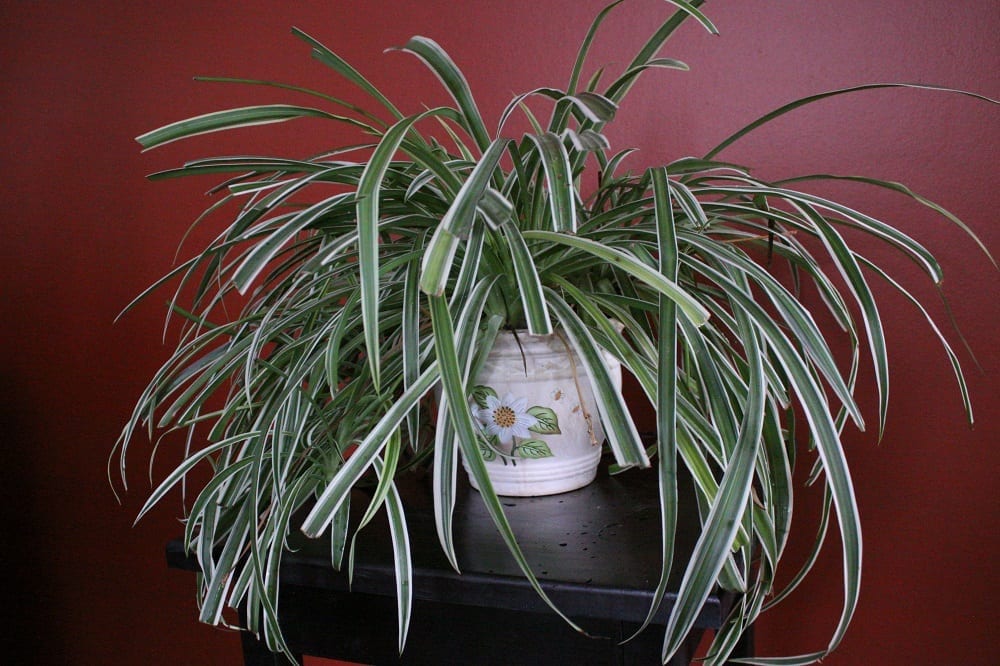
This is the renowned zebra plant. The pattern of its leaves are the reverse of Vittatum, as the cream color is at the edges of the leaves, and the deeper green is in the middle. The colors are also a bit more vibrant than Vittatum’s. As the plant ages, the cream color turns white, which is a lovely contrast with the dark green.
The zebra plant may be harder to find than other types of spider plant, and while other spider plants tend to grow tall, this particular plant tends to grow wide. Avoid direct sunlight when choosing a place to grow this zebra spider plant. If it is in direct bright light, it could scorch the leaves!
Care For Your Spider Plant

While spider plants are famously easy to grow, there are some things you should do to make sure that they really flourish. Though a spider plant like the Vittatum can do well in the shade, they generally do best in bright, indirect light. For most spider plants, long exposure to direct light can make their leaves burn.
The soil in the pot should be allowed to dry thoroughly before it is watered again, as spider plants don’t like “wet feet.” To find out if the soil is dry, stick your finger in it up to the knuckle. If soil doesn’t cling to your finger, give the plant a drink. You can tell if you’re overwatering because the tips of the leaves may turn brown.
Unlike a lot of plants that originated in the tropics, and the spider plant’s origins can be traced back to tropical Africa, this plant prefers it on the cool side. This would be between 55 and 65 degrees Fahrenheit. The plant won’t mind if the room is a bit warmer than this, but it shouldn’t be placed in a room whose temperature is below 50 degrees F.
Are Spider Plants Toxic?
Spider plants are non-toxic to humans, but they can upset the digestive systems of cats. Though they’re not especially vulnerable to pests, some, such as aphids and spider mites, find them attractive. Find how to get rid of aphids naturally here.
Browning Leaves
If you see the leaves turning brown at the end, there are a few different things you can check for. First check to make sure you’ve watered your spider plant fairly recently and the soil isn’t dry!
Next think about when the last time you fertilized the soil. Was it recently? If it was, you may have over-fertilized. If not, you may want to give it a small amount of fertilizer.
Also, think about where the plant is located. Is it getting too much sunlight? If it is, that can be a cause for the leaves going brown. It may also not be getting enough humidity, as they do like a more humid environment. Try out some of these easy humidifying ideas.
If just the tips of the leaves are going brown, read here on why that might be happening and how to solve the problem!
Pin It!
Want to keep these plant ideas for later? Save them to Pinterest!
